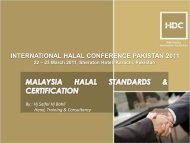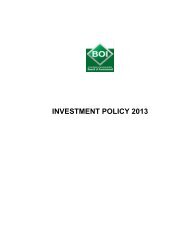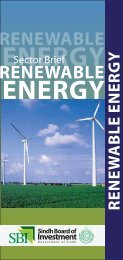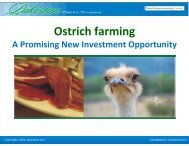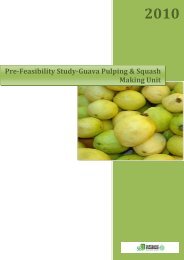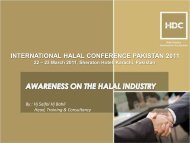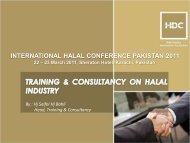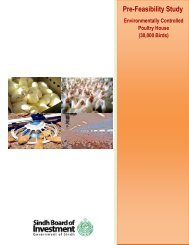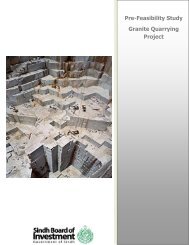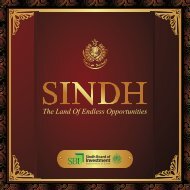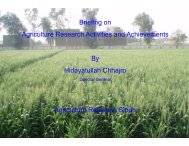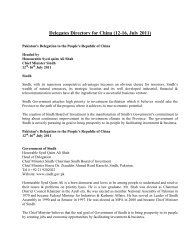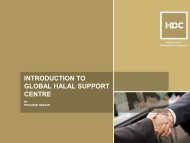Keenjhar Lake Resort Project - Sindh Board Of Investment ...
Keenjhar Lake Resort Project - Sindh Board Of Investment ...
Keenjhar Lake Resort Project - Sindh Board Of Investment ...
You also want an ePaper? Increase the reach of your titles
YUMPU automatically turns print PDFs into web optimized ePapers that Google loves.
5 Pakistan – Profile and Overview<br />
5.1 Country Profile<br />
5.1.1 Overview<br />
Pakistan is the 6 th largest country of the world with a population estimated at 180 million<br />
according to the Population Census of Pakistan – September 2009. It lies between 23°35’ to<br />
37°05’ north latitude and 60°50’ to 77°50’ east longitude, touching the Hindu Kush Mountains<br />
in the north and extending to the Arabian Sea. Pakistan is bounded by Iran in the west,<br />
Afghanistan in the north-west, India in the east and south-east with Arabian Sea in the south.<br />
It shares a common border with China alongside Gilgit and Baltistan in the northern part. It<br />
covers 796,096 sq kms and is divided into four provinces namely: <strong>Sindh</strong>, Punjab, Khyber<br />
Pakhtunkhwa (KP) [formerly known as North West Frontier Province (NWFP)] and<br />
Baluchistan.<br />
Climatically, Pakistan enjoys a<br />
considerable measure of variety where its<br />
north and north western areas are<br />
extremely cold in the winter while the<br />
summer months, from April to September,<br />
are pleasant. The coastal strip in the south<br />
normally has a moderate climate. The<br />
Indus Valley plains are extremely hot in<br />
the summer with cold and dry weather<br />
during the winters. Monsoonal rains fall<br />
late during the summers. Due to the<br />
rainfall and high diurnal range of<br />
temperatures, humidity is comparatively<br />
low.<br />
The country has an agricultural economy<br />
with a network of canals irrigating a major<br />
part of its cultivated land producing major<br />
crops such as wheat, cotton, rice, millet<br />
and sugar cane.. The main natural<br />
resources comprise natural gas, salt, coal<br />
and iron whereas cotton, textiles, sugar,<br />
cement and chemicals also tender an<br />
important role in the economy of Pakistan.<br />
Pakistan is an Islamic country where 97% of the population is Muslim and the remaining 3%<br />
comprise Christians, Hindus, Zoroastrians and others.<br />
English is the official language while Urdu, used as a medium of understanding throughout<br />
the country, is the national language. According to the Summer Institute of Linguistics, a total<br />
of 72 languages are spoken all over Pakistan.<br />
5.1.2 Demographics<br />
► Population Reference Bureau, figures for mid 2009 classify Pakistan as the sixth most<br />
populous country in the world. Population grew during 1972 to 2009 at a compounded<br />
annual growth rate (“the CAGR”) of 2.3%. The country’s population is estimated to double<br />
by the year 2045 if it grows at 1.8% per annum.<br />
► The population density has increased to 209 persons per sq. km. in 2009, from 42.5<br />
persons per sq km in 1951 which is almost a fivefold increase. A large percentage of the<br />
urban population of Pakistan is centred in three major urban agglomerations: Karachi,<br />
Lahore and Faisalabad.<br />
21<br />
<strong>Keenjhar</strong> <strong>Lake</strong> <strong>Resort</strong> <strong>Project</strong> - <strong>Project</strong> Information Memorandum



